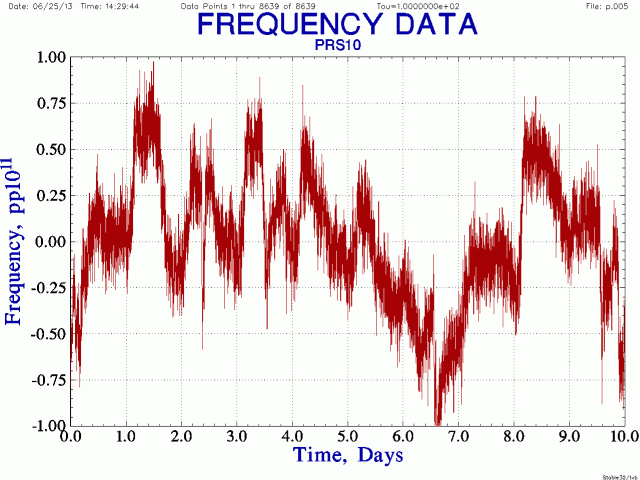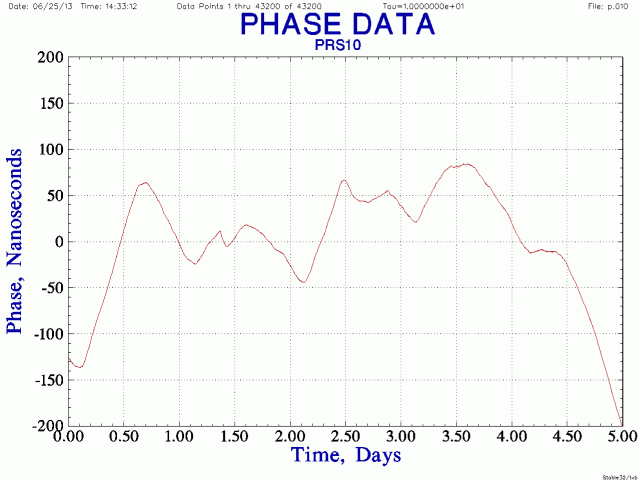Introduction
I placed a PRS10 rubidium oscillator outside for 10 days
and measured its frequency to see the effects of ambient temperature.
The plots below cover 9 AM Friday June 14 to 9 AM Monday June 24, 2013.
Frequency
Below is a 10-day frequency plot.
The frequency is stable to within ±1×10-11 and
diurnal variations are clearly visible.

Temperature
Below is a record of ambient temperature near the PRS10 during the same period.
Roughly, we see that a 10 °C change in temperature
corresponds to a 1e-11 change in frequency.
Thus the temperature coefficient is 1e-12/K.

Phase
When frequency increases over time, phase (cumulative time error) grows.
Now if frequency decreases during evening by about the same amount
that it increases during the day there will be little net phase error.
However, there will still be an RMS time error.
Here is an example of phase error over 5 days.




